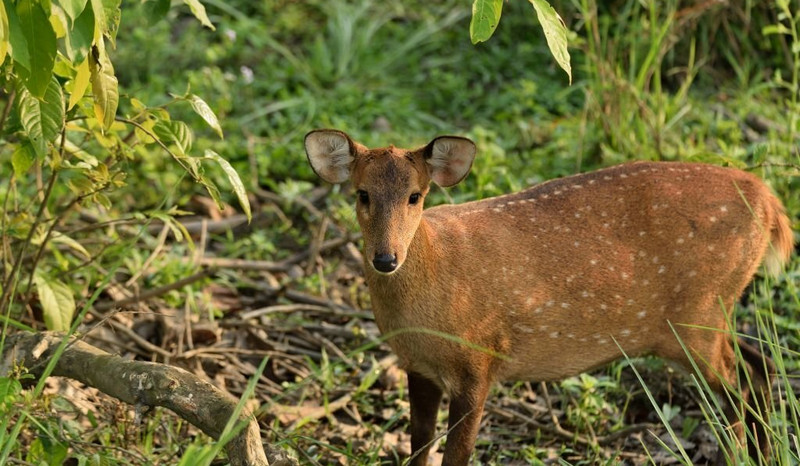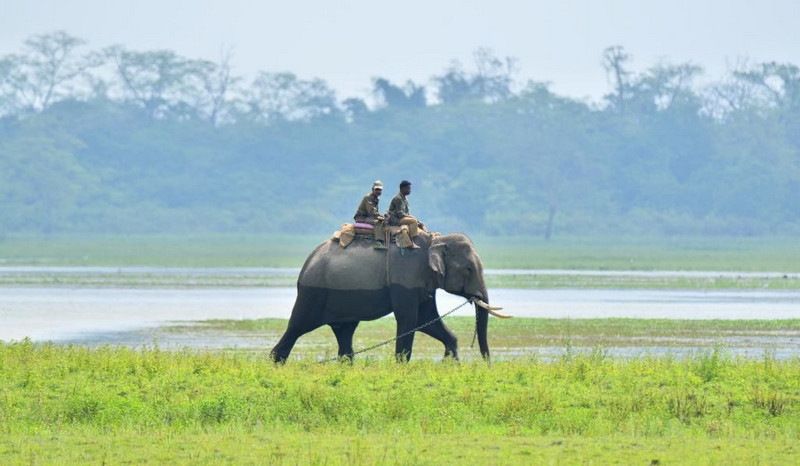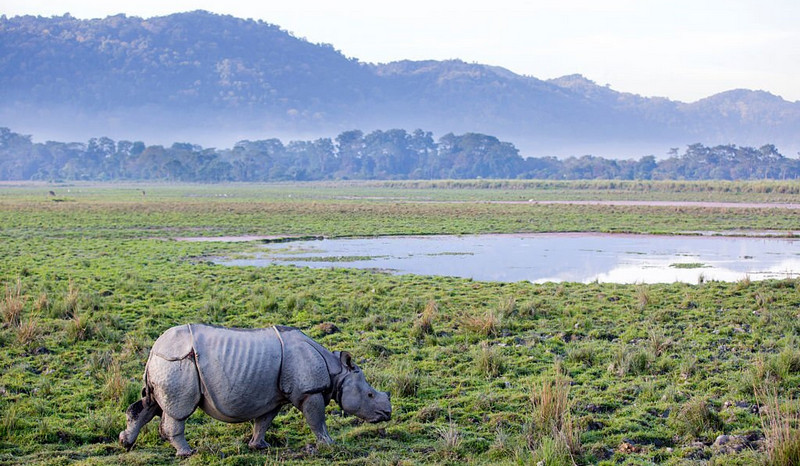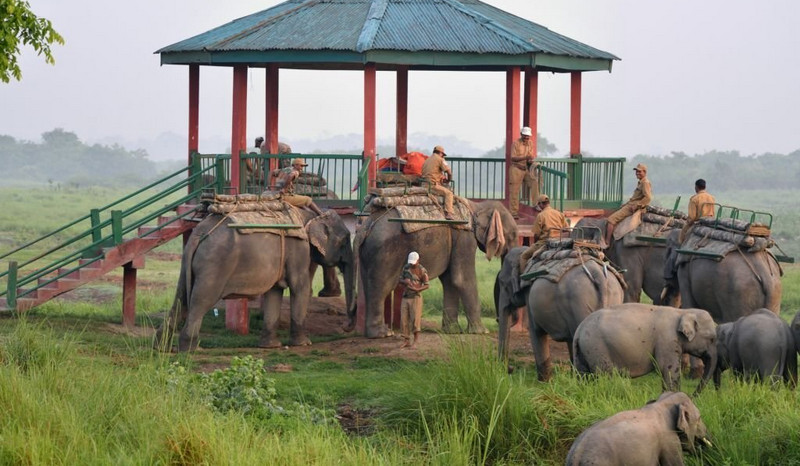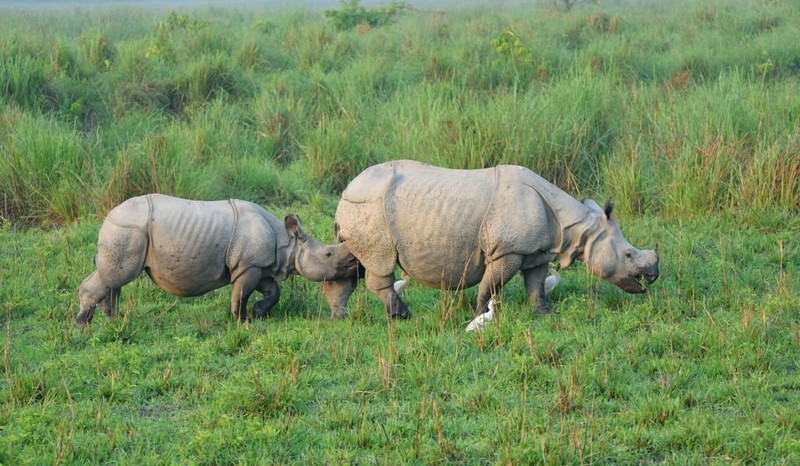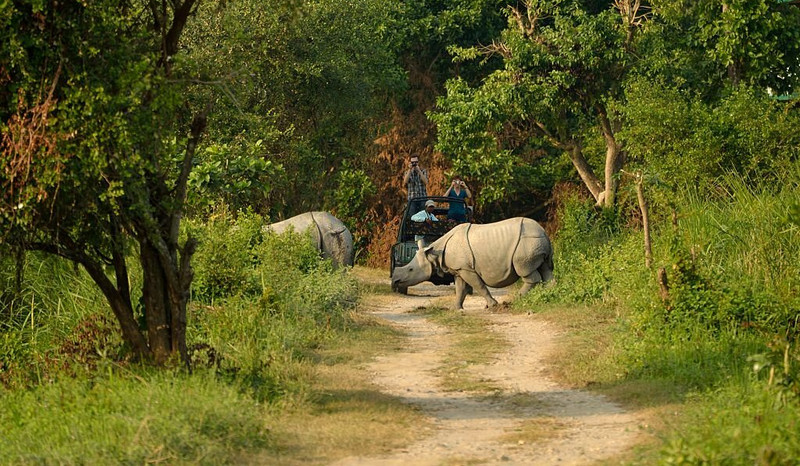Kaziranga National Park
Assam
- Altitude: 40m – 80m above mean sea level
- Temperature: 30 degrees Celsius
- Vegetation: Tall elephant grass, marshland, and dense tropical moist broadleaf forests
- Water Resources: Brahmaputra and Mora Diphlu
- Core Area: 482 sq. km
- Buffer Area: 548 sq. km
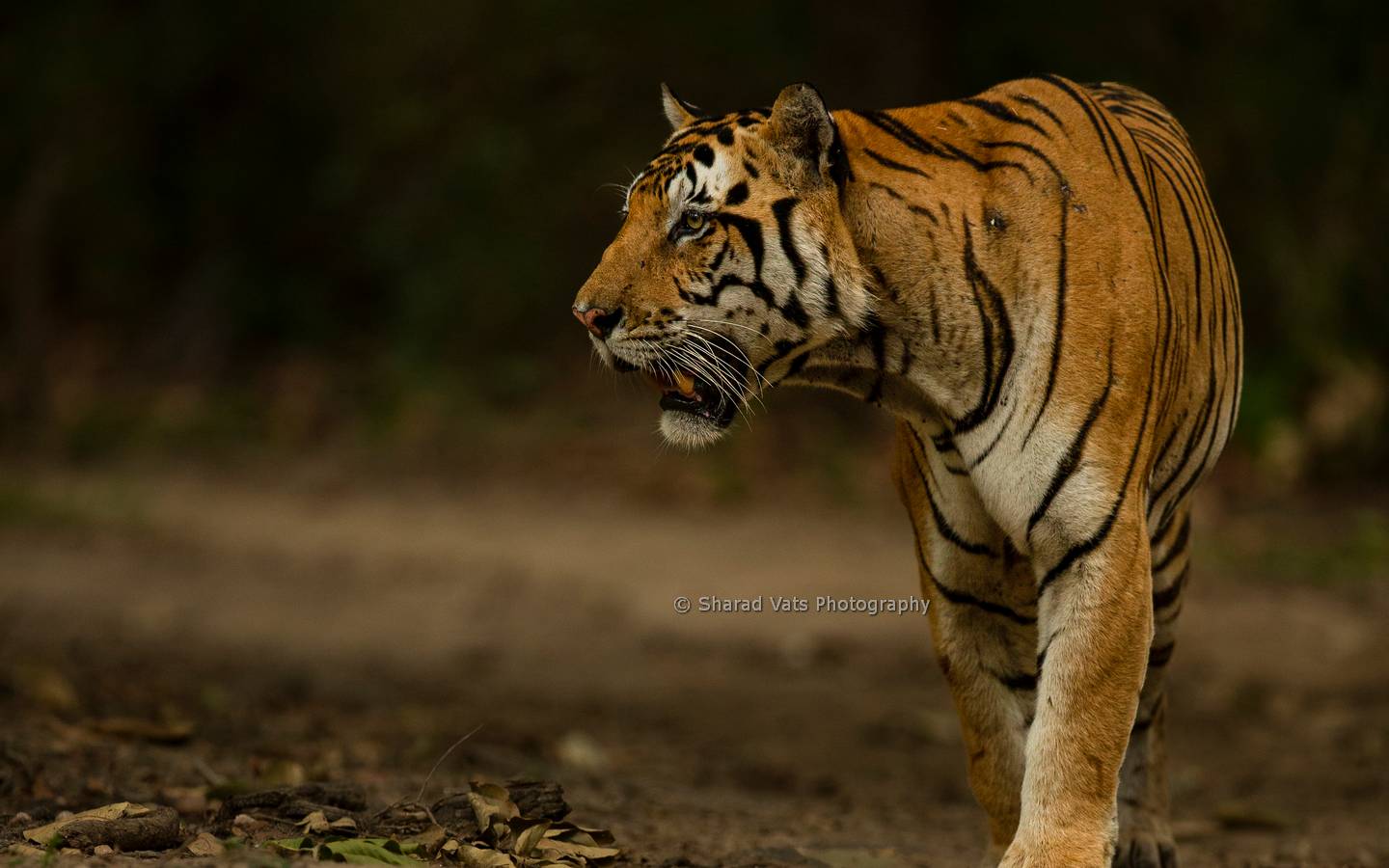
Brief about Kaziranga National Park
Kaziranga National Park, a UNESCO World Heritage Site, is known for its steep woodland, thick elephant grass, rough reeds, marshes, and tiny lakes, and is home to the Great Indian one-horned rhinoceros. In 1974, it was designated as a national park.
Kaziranga National Park is one of the last remaining unspoiled regions in eastern India. It is home to the world’s largest population of one-horned rhinoceroses, as well as tigers, elephants, panthers, and bears, as well as tens of thousands of birds.
Kaziranga National Park is located in Assam’s Golaghat District and Nagaon District. It is Assam’s oldest park, spanning 430 square kilometers between the Brahmaputra River on the north and the Karbi Anglong Hills on the south. The park area and tea estates are boxed in by table-top tea bushes as National Highway 37 goes through. Rhinos and wild elephants can even be seen wandering along the highway.
Kaziranga’s Attractions – The real draw of Kaziranga National Park is its wide range of wildlife beauty. The enormous One Horned Rhinoceros is Kaziranga’s most valuable asset, but it also houses elephants, wild Asiatic water buffaloes, swamp deer, hog deer, gaur, sambar, Indian Muntjac, and many other kinds of flora and fauna. After that, the Ganges Dolphin is drawn to Kaziranga, which has a Tiger Reserve. Birdlife considers Kaziranga National Park to be a notable bird-watching destination.
Flora & Fauna in Kaziranga National Park
Flora in Kaziranga National Park
Because of the difference in height between the park’s eastern and western portions, alluvial inundated grasslands, alluvial savanna woods, tropical moist mixed deciduous forests, and tropical semi-evergreen forests can be found here. Kumbhi, Indian gooseberry, cotton tree, and elephant apple are just a few of the park’s well-known trees. A wide diversity of aquatic plants can also be found in lakes, ponds, and along riverbanks.
Fauna in Kaziranga National Park
The world’s largest population of Indian Rhinoceros may be found in Kaziranga Park’s woodland zone. Hoolock Gibbon, Tiger, Leopard, Indian Elephant, Sloth Bear, Wild water buffalo, swamp deer, and other species can be spotted in the elephant grass, marshland, and dense tropical moist broadleaf forests of Kaziranga. In 2006, the government classified Kaziranga as a Tiger Reserve, citing an annual growth in tiger population. A large number of migratory bird species from Central Asia can also be found here.

